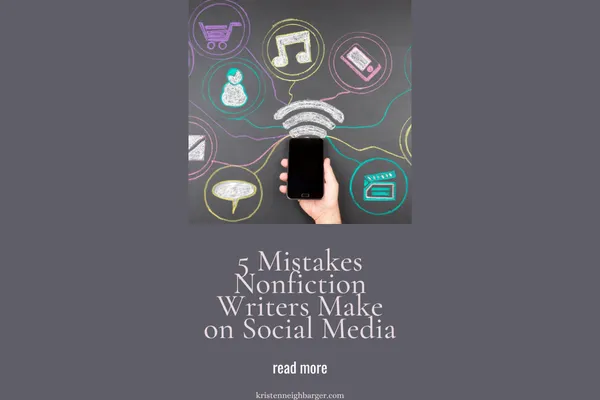
5 Mistakes Nonfiction Writers Make on Social Media (and What to Do Instead)
When I first started writing and attempting to post on social media, I spent more time staring at the blinking cursor than actually creating content.
Have you been there?
And once I did get the hang of it, I found myself spending hours designing graphics—only to post once and start over again the next day.
It took me years (and a whole lot of trial and error), but I finally figured out what works—and what doesn't—when it comes to showing up online as a nonfiction writer.
If you’re trying to build a platform, connect with your audience, or simply share your work in a more meaningful way, this post is for you.
Here are 5 common mistakes nonfiction writers make on social media—and what to do instead.

1. Talking at your audience instead of with them
The Mistake: Posting long reflections or expert tips without inviting your reader into the conversation.
Why It’s a Problem: It feels like a lecture, not a connection—so people keep scrolling.
What to Do Instead: Start with a relatable hook or question. Write like you’re sitting across from a friend at a coffee shop—not giving a TED Talk.
2. Only showing up when you’re selling something
The Mistake: Using social media only to promote launches, books, or services.
Why It’s a Problem: It teaches your audience to ignore you unless you’re asking for something.
What to Do Instead: Show up consistently with value—share behind-the-scenes glimpses, writing tips, personal reflections, or even what you’re learning in real time.
3. Not repurposing your content
The Mistake: Creating great content once and never using it again.
Why It’s a Problem: You’re working way harder than you need to.
What to Do Instead: Turn your blog posts into reels, carousels, captions, quote graphics, and email newsletters. One solid piece of writing can easily become 10+ posts.
4. Using unclear or generic bios and captions
The Mistake: Bios like “Writer. Speaker. Coffee Lover.” Or captions that say, “Just felt led to share this…”
Why It’s a Problem: It doesn’t tell new followers what you do or how you can help them.
What to Do Instead: Use clear, specific language that communicates your audience and purpose:
✍️ “Helping nonfiction writers clarify their message and build a sustainable writing rhythm.”
🎯 “Equipping Christian authors to write, speak, and share their story online with confidence.”
5. Trying to sound like someone else
The Mistake: Mimicking influencers or using overly polished, brand-speak language.
Why It’s a Problem: It feels inauthentic—and it’s exhausting to maintain a voice that isn’t yours.
What to Do Instead: Lean into your real voice. Use humor if that’s your thing. Be honest. Be warm. Be you. That’s who your audience is here for.

Hopefully, these quick tips save you a few hours (and a few headaches) this week!
📅 If you’d love some 1:1 guidance for your writing or content strategy, I’d love to chat.
Book a free consult call here
✨ Bonus Opportunity: Want to connect in person?
If you’re looking for fresh inspiration and real connection with fellow writers, I highly recommend the Hope Story Conference happening January 29–31, 2026, in Charlotte, NC.
With keynote speakers like Ruth Chou Simons and Ann Voskamp, it’s one of the most encouraging spaces I know for faith-based writers who want to grow in both craft and calling.
You’ll leave refreshed, equipped, and reminded that your story truly matters.
👉 Grab your ticket here (affiliate link)
Thanks for using my link to support my work!
